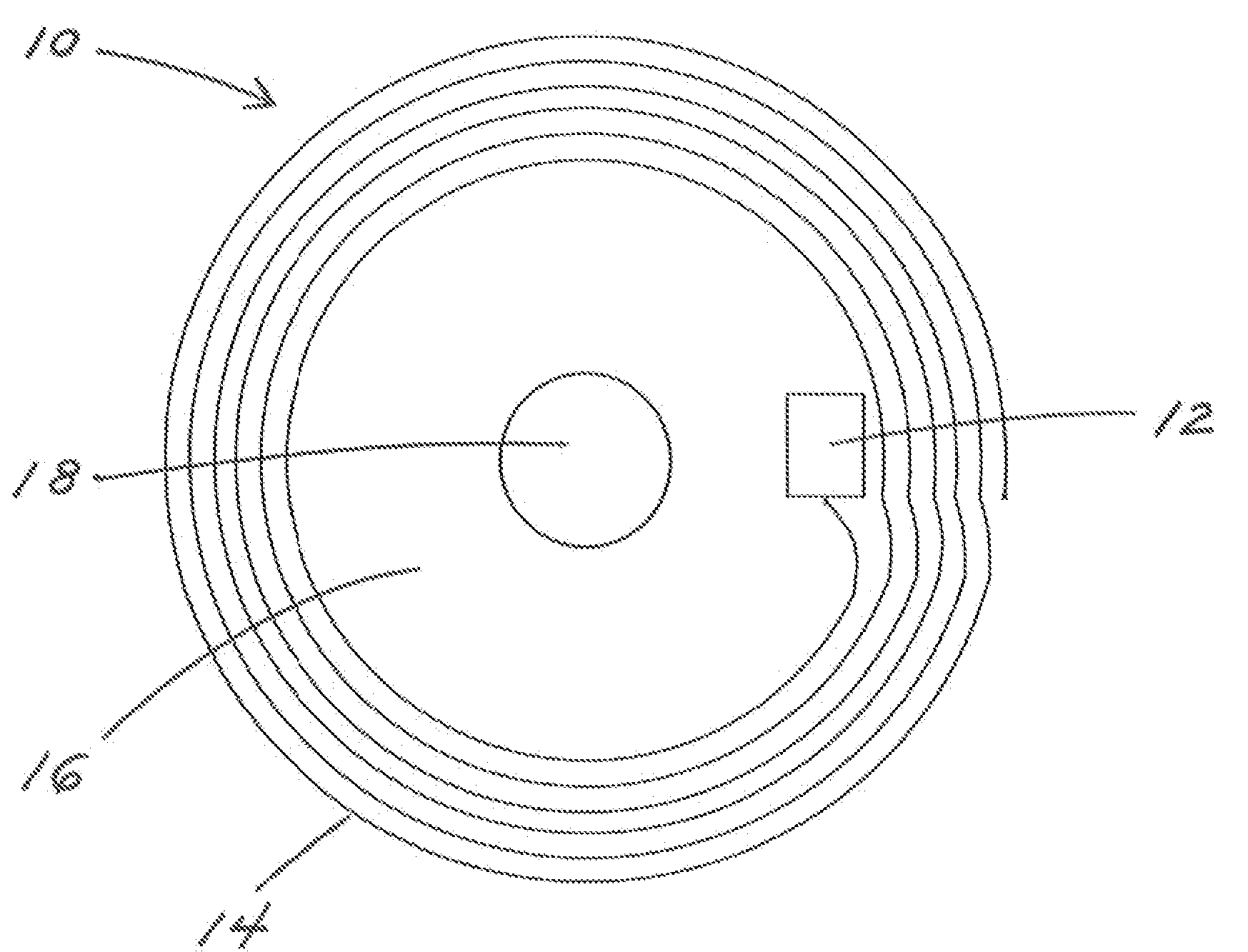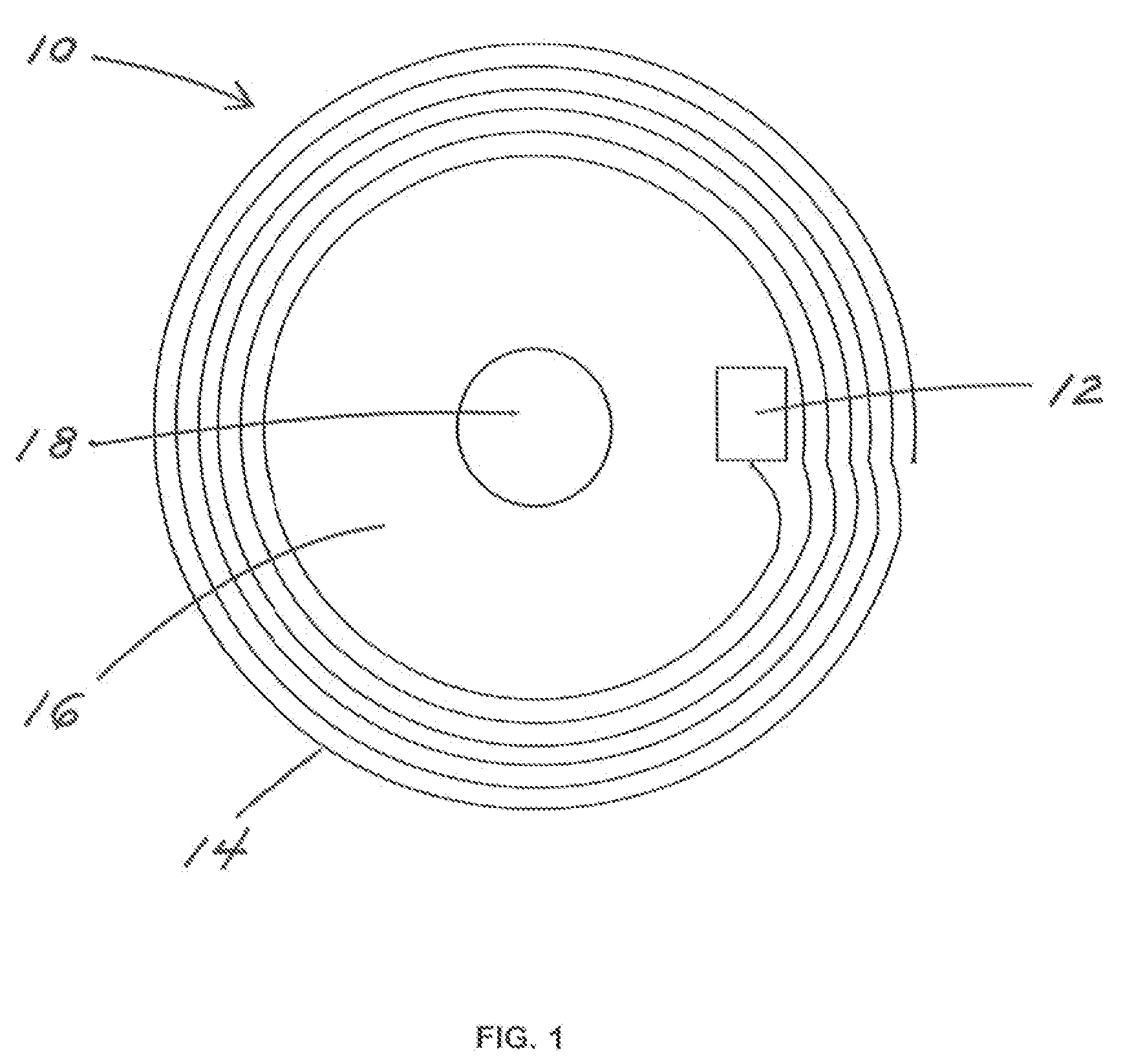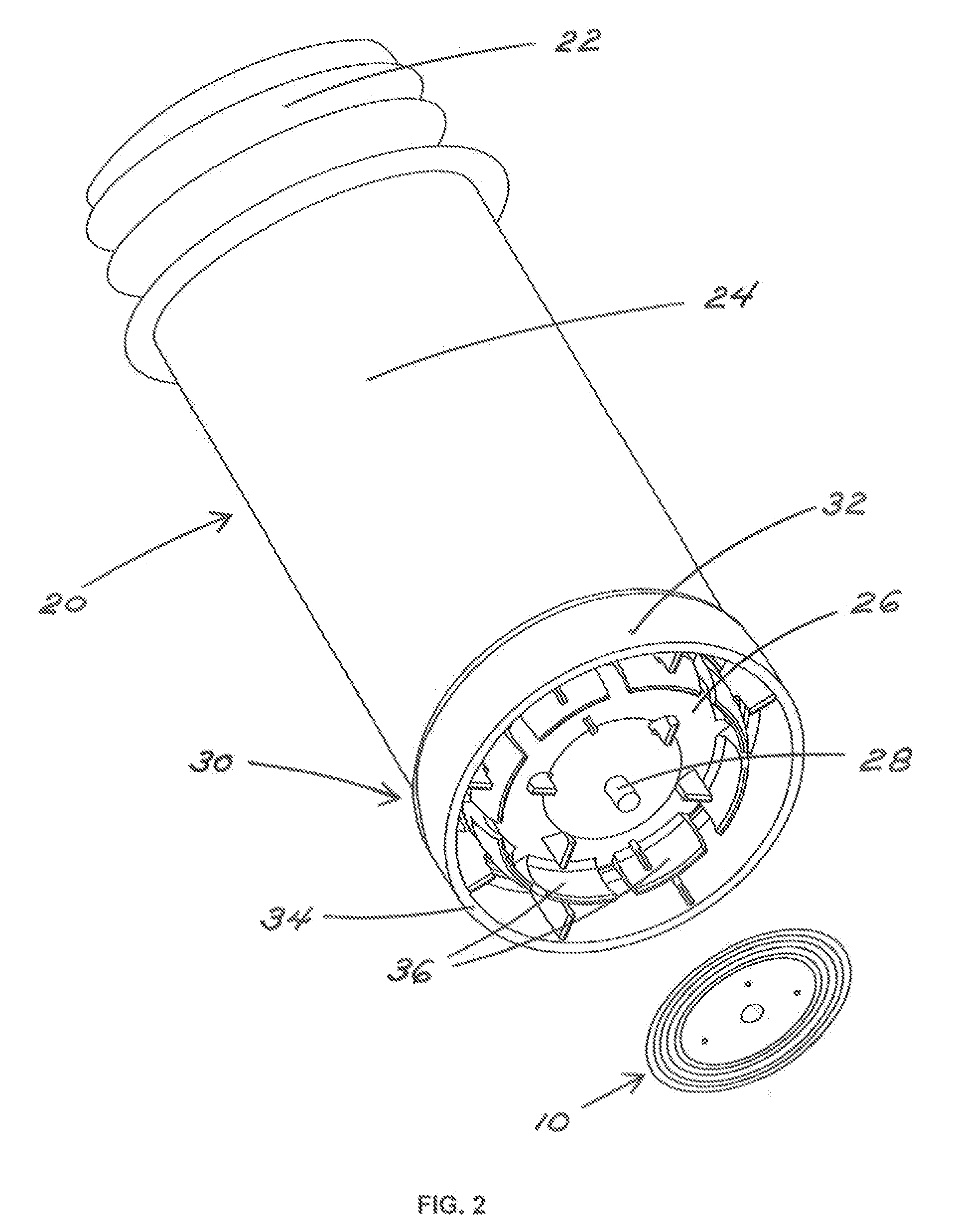Containers having radio frequency identification tags and method of applying radio frequency identification tags to containers
a technology of radio frequency identification and container, applied in the field of containers with radio frequency identification tags, can solve the problems of extremely limited information that can be written on the label of bar code, design challenges with respect to both containers and bar code readers, and the possibility of counterfeiting, so as to reduce facilitate the effect of carrying out and reducing the risk of counterfeiting
- Summary
- Abstract
- Description
- Claims
- Application Information
AI Technical Summary
Benefits of technology
Problems solved by technology
Method used
Image
Examples
Embodiment Construction
[0036]As used herein, the expression “radio frequency identification system” means a system comprising a radio frequency identification tag made up of a microchip with an antenna, and a radio frequency identification interrogator or radio frequency identification reader with an antenna. The radio frequency identification reader sends out electromagnetic waves. The antenna of the radio frequency identification tag is tuned to receive these waves. A passive radio frequency identification tag draws power from the field created by the reader and uses it to power the circuits of the microchip. The microchip then modulates the waves that the passive radio frequency identification tag sends back to the radio frequency identification reader, which converts the waves received by the radio frequency identification reader into digital data.
[0037]As used herein, the term “microchip” means a miniaturized electronic circuit that has been manufactured on the surface of a thin substrate of semicond...
PUM
 Login to View More
Login to View More Abstract
Description
Claims
Application Information
 Login to View More
Login to View More - R&D
- Intellectual Property
- Life Sciences
- Materials
- Tech Scout
- Unparalleled Data Quality
- Higher Quality Content
- 60% Fewer Hallucinations
Browse by: Latest US Patents, China's latest patents, Technical Efficacy Thesaurus, Application Domain, Technology Topic, Popular Technical Reports.
© 2025 PatSnap. All rights reserved.Legal|Privacy policy|Modern Slavery Act Transparency Statement|Sitemap|About US| Contact US: help@patsnap.com



